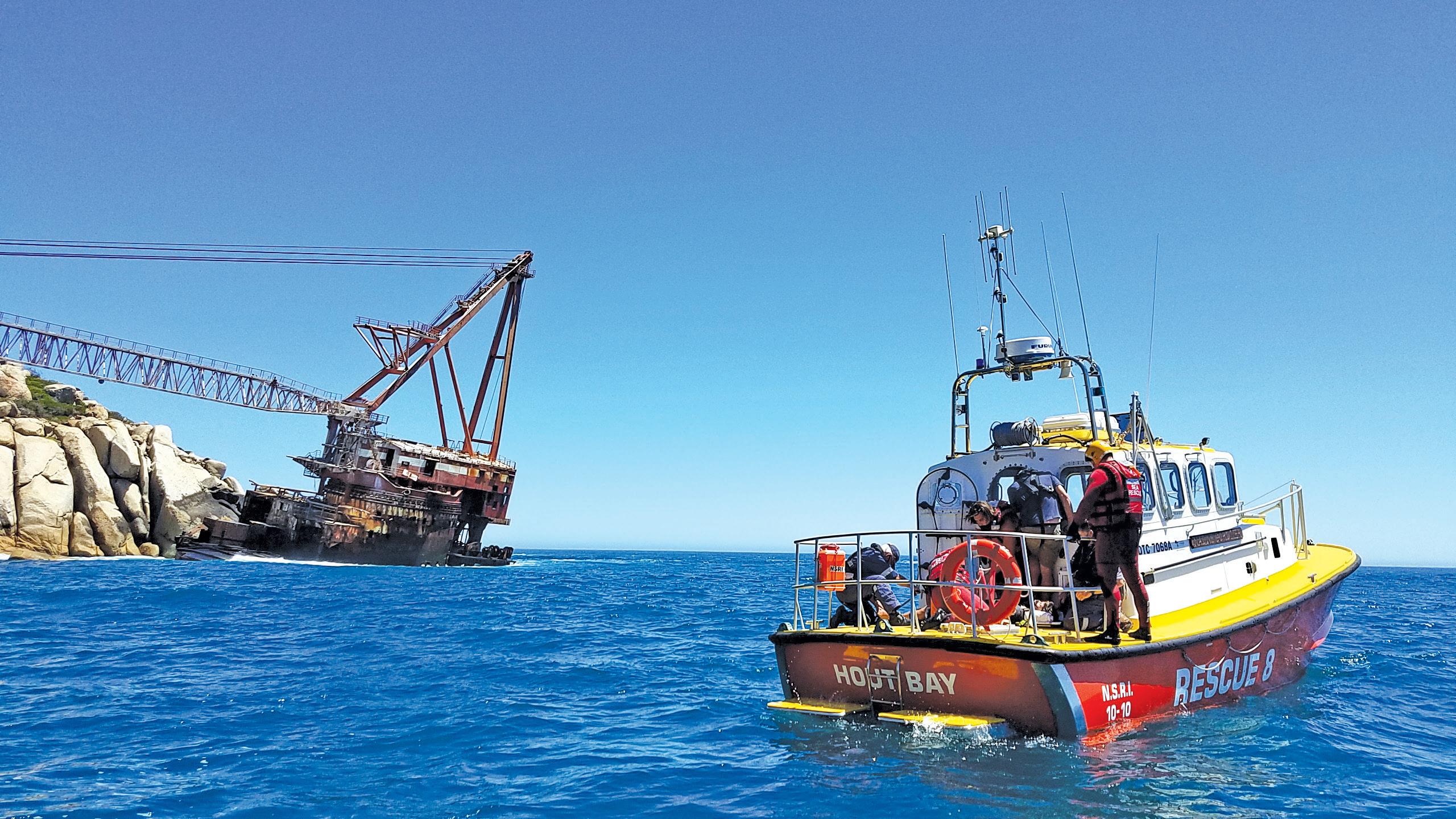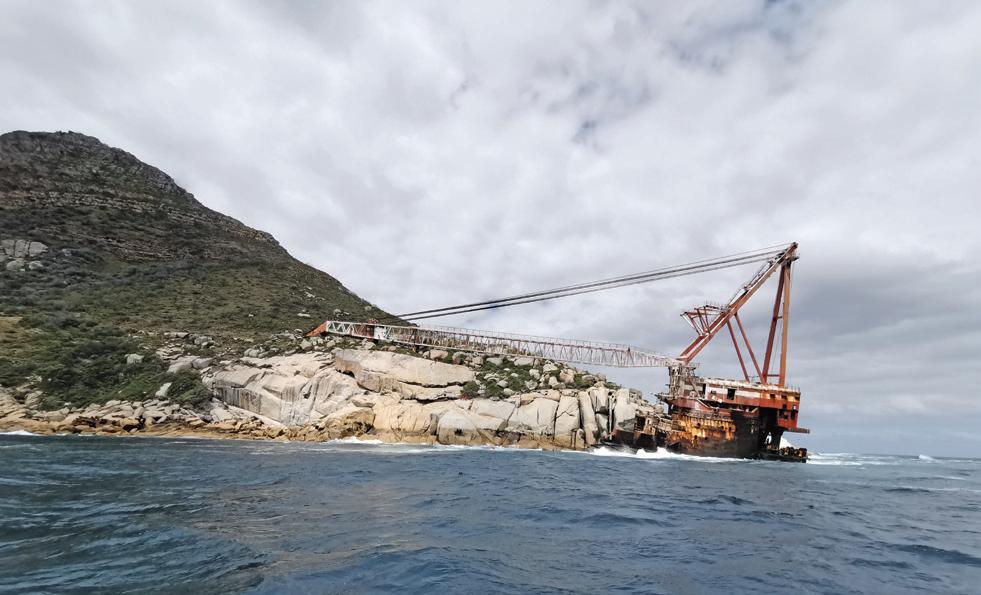
3 minute read
DANGER ZONE
Sea Rescue crew were called out to the Bos 400 wreck three times in under a month to assist casualties who had injured themselves. We cannot urge the public enough to stay away from this area. It’s life threatening for all concerned. Cherelle Leong tells us why.
IT’S NOT UNCOMMON TO seek out adventure. If anything, danger is half of the attraction. And when you see video clips of other people’s adventures on social media, it might make you think, ‘I should do that; it looks like fun!’ But, unfortunately, viral videos on Instagram only tell half the story. You see a guy jump from a crane 20m above the ocean, come up to the surface and shout to his friends that he did it… You don’t see the rescue services being activated or him being secured in a Kendrick extrication device with a suspected spinal injury – in fact, three cracked vertebrae, as later confirmed by an X-ray.
You don’t know that, just the week before, a female had fractured her femur in two places at the same site. Luckily it wasn’t a compound fracture and no bones protruded from the skin. Miraculously none of her arteries were severed – if they had been, she might have succumbed to her injuries before rescue services could get to her. She stoically managed excruciating pain as the rescuers splinted her leg and assisted her safely to the waiting Sea Rescue vessels.
The boats can’t get close to the rocks because of a mass of twisted rusted metal from the wreck that sits just below the surface. The swell crashing through pulls in all directions, creating wash and white water. Rescue crews have to time it just right to swim to shore, working with the swell to ensure they don’t get pulled into an area where they could get snagged on a section of the submerged wreck.
Sea Rescue coxswains and crew are trained to operate safely in these challenging conditions, all too aware of how quickly things can go wrong. People who are unfamiliar with the area are not only putting their own lives at risk but also those of the rescue volunteers who have to come to their aid when things don’t go according to plan. Like when Sea Rescue was activated to the site of the Bos 400 wreck for the third time in under a month – this time for a drowning in progress. A youngster had jumped into the sea from the rocks and gone for a swim. But when he tried to get back to shore he was overcome by a set of waves that tumbled him over the rocks. The more he tried, the more the waves washed over him, until his friends, seeing he was in danger, jumped in and helped get him back onto the rocks. By the time Sea Rescue volunteers arrived on the scene, he was hypothermic, had multiple bruises and scratches and was visibly shaken from his ordeal.
The Bos 400 is a very unstable 30-year-old wreck. There’s a gully between the wreck and the rocky shore where large sets of waves wash through. The vessel’s helipad, which had collapsed in 2010, lies just below the surface, along with sharp twisted pieces of metal that protrude at odd angles. There is no road access by land, only a steep unmarked path, and cellphone and radio signals are intermittent. To get there by sea from the nearest Sea Rescue stations takes at least 20 minutes in good weather conditions. If you need help at this location, it’s going to take a while for rescue services to get to you. Sea Rescue is appealing to the public to avoid swimming near or trying to access the wreck of the Bos 400. These three rescues fortunately happened to have had good outcomes, but it may not be the case next time.












